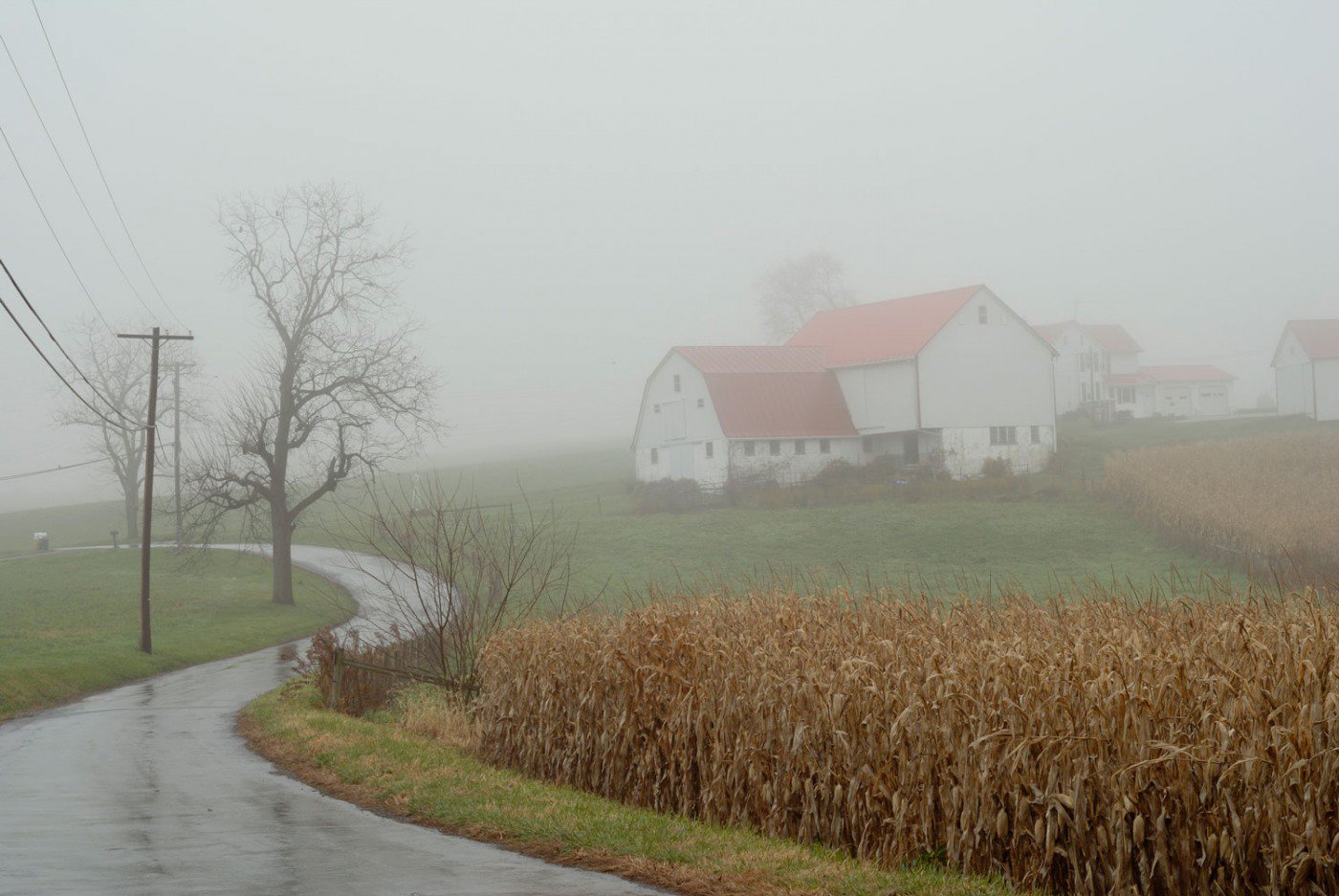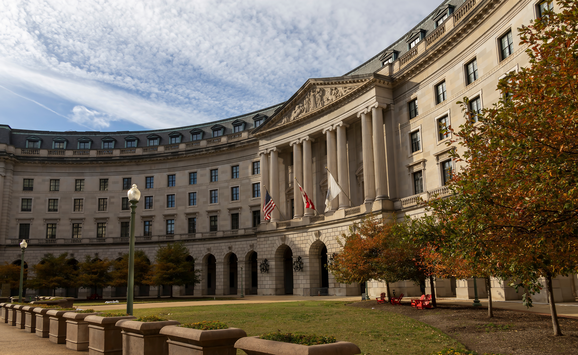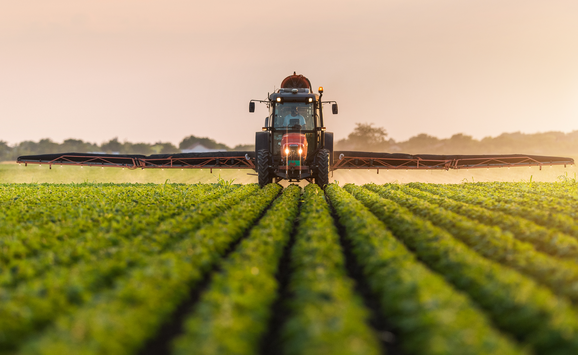Saltwater intrusion induced by climate change presents an explicit threat to the Earth’s coastal regions. How can communities best adapt to the risks for agriculture and ecosystems?

For coastal areas around the globe, flooding poses well-known and deadly threats. As these regions continue to suffer from floods and incur increasing losses of life and property in the wake of strong storms, society is also grappling with its growing understanding of climate change and the perils associated with sea-level rise and storm surge. Among the hazards, the salinization of waters and soils along coastlines—saltwater intrusion—brings less obvious but distinct risk.
Sea-level rise propels this phenomenon by reducing the difference in elevation between land and sea, making it possible for saltwater to effectively move beyond oceans and seep into surface and groundwater as well as the soil itself. Driving massive changes in coastal ecosystems, increased salinity combined with more frequent inundation causes tree die-off in coastal forests, the loss of freshwater wetlands, and diminished agricultural productivity. Saltwater intrusion can also contaminate critical freshwater sources that people living in coastal watersheds depend on for clean drinking water, reliable irrigation, and other needs. It also alters soil chemistry and mobilizes nutrients—contributing to nutrient loading in adjacent water bodies that reduces water quality and can harm species.
Drought and groundwater extraction (for irrigation and other uses) exacerbate saltwater intrusion because they reduce pressure from freshwater resources that otherwise supports the balance of coastal ecosystems by naturally helping to keep seawater out. Ditches and canals previously built to drain coastal lands to minimize flooding damage in agricultural fields currently complicate the problem, acting as conduits for saltwater and funneling it inland as storms surge locally and sea level rises around the world.

A farmhouse and cornfield on Maryland’s Eastern Shore on a foggy day.
Saltwater intrusion induced by climate change presents an explicit threat to the Earth’s coastal regions, and awareness is growing as communities realize the dangers. How can farmers and landowners in coastal areas best adapt to the risks for agriculture and ecosystems? This question and others will remain relevant: because of sea-level rise, there will always be a new edge along coastlines—a new band of land needing to adapt to saltwater intrusion. To both support the well-being of coastal communities and maintain key services provided by these ecosystems, we must have myriad solutions to manage those edges. For example, how will individuals and society weigh trade-offs when making decisions about whether and how to prolong the productivity and profitability of coastal agricultural lands? How will these communities consider those options for land management among others that can facilitate the inland migration of wetlands or improve water quality? In the face of climate change, there is much to gain by exploring how to best transition agricultural lands from current cropping systems that are being harmed by saltwater intrusion to alternative crops or land uses.
We’ve assembled a team and are examining the impacts of saltwater intrusion on coastal agroecosystems and the effectiveness of potential management responses for enhancing community resilience in these areas. Achieving socially and environmentally beneficial transitions is more likely with a better understanding of the options for alternative crops and land uses as well as informed policy design that incentivizes sound adaptation strategies. Our work is just beginning and brings together field and laboratory research, hydrologic and remote sensing capabilities, outreach and engagement with agricultural communities, and economic and social analysis. With the broad goal of identifying and evaluating potential approaches for managing the risk of saltwater intrusion induced by climate change, these efforts focus on agricultural lands on the Eastern Shore of the Chesapeake Bay. This region is experiencing some of the highest rates of sea-level rise around the globe, intensified by high rates of land subsidence in already low-lying land (see Figure 1). Sea-level rise and saltwater intrusion will continue to affect more areas of the world over the coming centuries, and the conditions in the Chesapeake Bay area make it an ideal testbed for studying how coastal ecosystems and land-use practices are changing as society adapts.
Figure 1a. Potential Inundation under Sea-Level Rise in the North American Coastal Plain

Note: A map of the North American Coastal Plain (green) and its inundation (pink) under 3 feet of sea-level rise.
Figure 1b. Potential Inundation under Sea-Level Rise in Two Counties on Maryland’s Eastern Shore

Water quality is a long-standing challenge for the Chesapeake Bay region, and Maryland’s Eastern Shore plays an outsized role in the nutrient loading of Bay waters. Farmlands affected by saltwater intrusion sit between developed uplands and tidal creeks and may serve as the last line of defense before water-borne nutrients and sediments reach local waterways. A better understanding of how adaptation strategies may help capture or prevent nutrient runoff in the Bay will benefit both farmers and residents of the Chesapeake as they consider the options.
Adaptation decisions made by farmers are particularly important: these choices affect the mobilization of nutrients into nearby waters and how wetlands can migrate as sea level rises.
Author
Farmers and landowners have responded in varying ways to reduced agricultural productivity and new unpredictability in crop yields. Some farmers around the Chesapeake Bay continue to cultivate fields in traditional rotations, and some have begun to switch to more salt-tolerant crops, such as sorghum. Others are simply abandoning fields as they become damaged by salt. Field abandonment can lead to colonization by agricultural weeds and native marsh plants, which could help facilitate ecosystem adaptation. But it also may expose lands to attack by the common reed (Phragmites australis), a noxious invasive species that poses a major threat to valued wildlife in wetlands as well as healthy ecosystem functioning. Landowners are also opting to convert salt-damaged lands to wetlands to restore wildlife habitat and hunting grounds. As saltwater moves inland, the choices made by farmers and landowners about how to adapt will affect future realities for water quality in the Bay, the survival and presence of wetland and migratory birds and other species, and community well-being as a whole.








